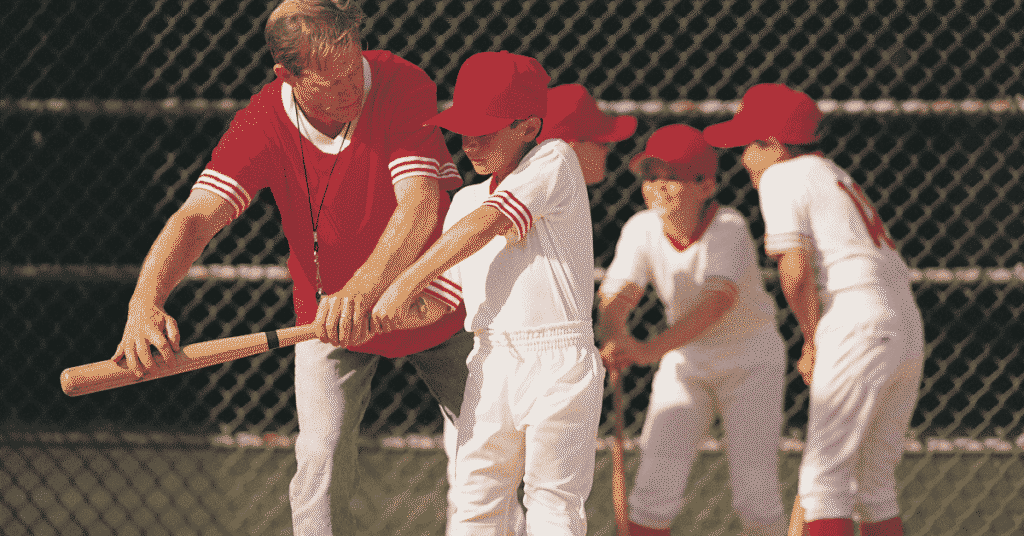
Baseball is a sport loved by millions, and for young players, learning the game can be both exciting and challenging. Coaching 10-year-olds requires a unique approach that combines skill-building, patience, and a strong understanding of the game. In this guide, we will provide you with actionable baseball coaching tips for 10-year-olds while offering insights into creating a positive and productive environment for young athletes. Whether you’re a seasoned coach or a parent stepping into this role for the first time, this guide will help you lay the foundation for a successful season.
Why Coaching 10-Year-Olds is Unique
At 10 years old, children are at a critical developmental stage. They are eager to learn, full of energy, and ready to absorb new skills, but they also have varying levels of attention spans and physical abilities. Here are a few things to keep in mind when coaching this age group:
- Focus on Fundamentals: Most 10-year-olds are still mastering the basics, so prioritize teaching proper throwing, catching, hitting, and base running techniques.
- Build Confidence: At this age, encouragement is key. Celebrate small wins and progress to keep them motivated.
- Keep It Fun: A positive and enjoyable experience will keep kids engaged and excited about baseball.
- Teach Sportsmanship: Instill the values of teamwork, respect, and fair play early on.
Essential Baseball Coaching Tips for 10-Year-Olds
1. Teach the Basics First
Young players thrive when they have a strong grasp of the fundamentals. Here are some basics to focus on:
- Throwing Mechanics: Teach them to step with their opposite foot when throwing and follow through with their arm. Demonstrate proper grip and arm motion.
- Catching Skills: Use soft-toss drills to teach kids how to track the ball into their gloves. Start with tennis balls for beginners to reduce fear of injury.
- Hitting Stance: Show them how to stand in the batter’s box, keep their eyes on the ball, and use their hips for power when swinging.
- Base Running: Teach them to run hard to first base, watch their coach for signals, and learn the importance of tagging up.
2. Make Practices Engaging
Kids respond better when practices are structured and fun. Keep their energy levels high by incorporating these tips:
- Warm-Up Drills: Start with light jogging, dynamic stretches, and simple throwing exercises to prevent injuries and get players warmed up.
- Skill Stations: Set up multiple stations focusing on different skills (e.g., pitching, fielding, hitting) to keep practices varied and productive.
- Small-Sided Games: Incorporate games like mini scrimmages or relay races to reinforce skills while keeping it enjoyable.
- Time Management: Limit drills to 10-15 minutes to match their attention spans.
3. Focus on Communication
Clear and consistent communication is essential for young players to understand instructions and build trust.
- Use Simple Language: Avoid complex terms. Instead of saying “rotate your hips,” say “swing your body like this” and demonstrate.
- Be Positive: Use encouraging words like “Great job!” or “You’re getting better!” to build their confidence.
- Set Expectations: Explain practice goals and team rules clearly at the start of the season.
4. Promote Teamwork
Baseball is a team sport, and learning to work together is crucial for success.
- Group Drills: Include activities that require players to collaborate, such as relay throws or group catching drills.
- Encourage Support: Teach kids to cheer for their teammates and celebrate each other’s successes.
- Rotate Positions: Allow players to try different positions so they can explore where they feel most comfortable and confident.
5. Teach the Mental Side of Baseball
Baseball is as much a mental game as it is physical. Help young players develop the right mindset:
- Handle Pressure: Teach them how to stay calm during intense moments, like hitting with two outs or catching a high-pressure fly ball.
- Learn from Mistakes: Emphasize that mistakes are opportunities to learn and grow. For example, if they strike out, encourage them to analyze what went wrong and try again.
- Visualization Techniques: Encourage players to visualize themselves succeeding, like hitting the ball or making a great catch.
6. Involve Parents in the Process
Parents play a vital role in supporting their child’s development as a player.
- Encourage Practice at Home: Share simple drills parents can do with their kids, like throwing and catching in the backyard.
- Provide Feedback: Update parents on their child’s progress and suggest areas for improvement.
- Set Boundaries: Encourage parents to be supportive but not overbearing during games or practices.
Common Challenges and How to Overcome Them
Even with the best planning, coaching 10-year-olds comes with its challenges. Here’s how to address some common issues:
1. Short Attention Spans
- Break drills into shorter segments.
- Keep instructions simple and demonstrate each drill.
- Incorporate quick games or competitions to regain focus.
2. Fear of the Ball
- Use softer balls when starting out.
- Teach proper glove positioning to build confidence.
- Gradually introduce standard baseballs as skills improve.
3. Balancing Skill Levels
- Pair advanced players with beginners during drills to encourage peer learning.
- Create skill-based groups for certain exercises to ensure every player is challenged appropriately.
- Celebrate individual progress rather than comparing players.
Benefits of Baseball for 10-Year-Olds
Playing baseball offers a range of physical, mental, and social benefits for young athletes:
- Physical Fitness: Improves coordination, strength, and endurance.
- Teamwork Skills: Teaches kids how to work with others towards a common goal.
- Discipline: Encourages commitment, punctuality, and hard work.
- Confidence: Builds self-esteem through skill mastery and achievements.
- Problem-Solving: Develops decision-making skills, like knowing when to throw to first base or attempt a double play.
Baseball Guide for Beginners
For those new to the game, understanding the basics is essential. Here’s a quick guide to help beginners get started:
Understanding the Game
- Objective: The goal of baseball is to score runs by hitting the ball and running around four bases in sequence.
- Positions: Familiarize yourself with positions like pitcher, catcher, infielders, and outfielders.
- Rules: Learn key rules like three strikes, four balls, and tagging up on a fly ball.
Essential Equipment
- Glove: A properly fitting glove is crucial for catching and fielding.
- Bat: Choose a bat appropriate for the player’s height, weight, and skill level.
- Helmet: Safety is essential, so ensure players wear helmets when batting or running bases.
- Cleats: Baseball-specific cleats provide better traction on the field.
Basic Drills for Beginners
- Tee Work: Practice hitting off a tee to develop proper swing mechanics.
- Ground Ball Drills: Teach fielding fundamentals by rolling grounders to players.
- Throwing Practice: Focus on accuracy and arm strength by playing catch regularly.
Conclusion
Coaching 10-year-olds in baseball is a rewarding experience that requires patience, dedication, and a focus on fundamentals. By prioritizing skill development, fostering teamwork, and maintaining a fun environment, you can help young players build a lifelong love for the game. Remember to adapt your approach to meet the needs of your team and celebrate their progress every step of the way.
At Base Blasters, we are passionate about all things baseball. From beginner-friendly guides to advanced coaching tips, our mission is to provide valuable resources for players, coaches, and fans. Explore our website for more insights, tools, and products designed to enhance your baseball journey. Whether you’re a coach looking for training aids or a player seeking the best gear, Base Blasters is your go-to source for everything baseball.


